Visiting George Town’s Clan Jetties has become a top island attraction in recent years, and the townhouse we were staying in was only a few blocks away from the most popular one (Chew Jetty). So, naturally, the Clan Jetties made it onto our list of things to see in George Town.
Deciding to actually visit the jetties, however, took a bit more consideration.
The so-called “clan jetties” are a collection of settlements along the George Town waterfront (Weld Quay) built on long wooden piers jutting out into the harbor. They were established to house Chinese laborers during the height of British rule, each pier housing a separate family clan for which the piers are named (e.g. Yeoh, Chew).
These settlements survive today and descendants of the original clans still reside in stilted homes along the piers.
Each Clan Jetty is a living, breathing community residing in neighborhoods seemingly frozen in time. For this reason, when George Town gained its UNESCO status in 2008, the Clan Jetties became a major tourist draw.
As tourist numbers to Old Town ballooned, so have the crowds (and seemingly endless tour groups) visiting the jetties. Chew Jetty, the most famous, has born the brunt of this [largely unwanted] attention, and there’s been a lot of push-back from residents in recent years for understandable reasons.
After researching the jetties it remained unclear to us whether we’d feel welcome or not. We figured the best way to find out was to do what we always do — visit independently (of a tour, etc.) and respectfully, and leave the minute it seems that we are imposing or some place we are not welcome.
Plus, we’ve got the magic ticket that gives us unparalleled access to local communities across East Asia — foreign-looking wee ones. Even the most hardened curmudgeon here can’t seem to resist the exotic baby from across the pond.
We’ll see what happens…

On our way down to the jetties, we passed this shell of this presumably historic building that someone went to great lengths to protect from the elements.
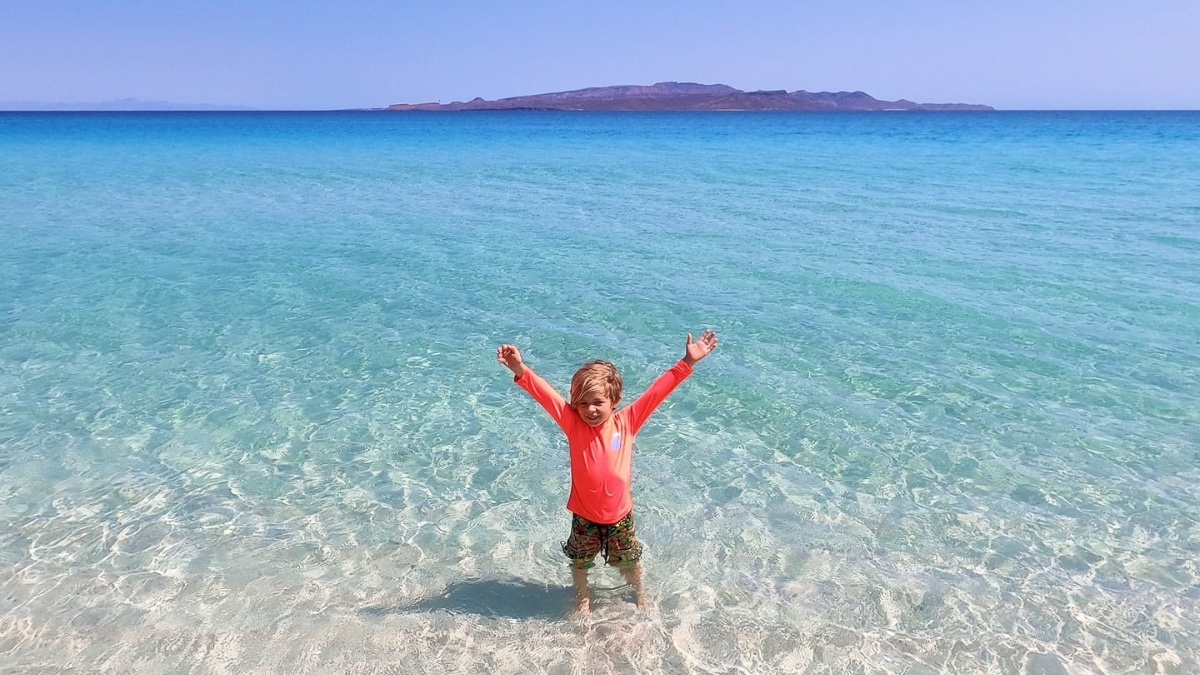
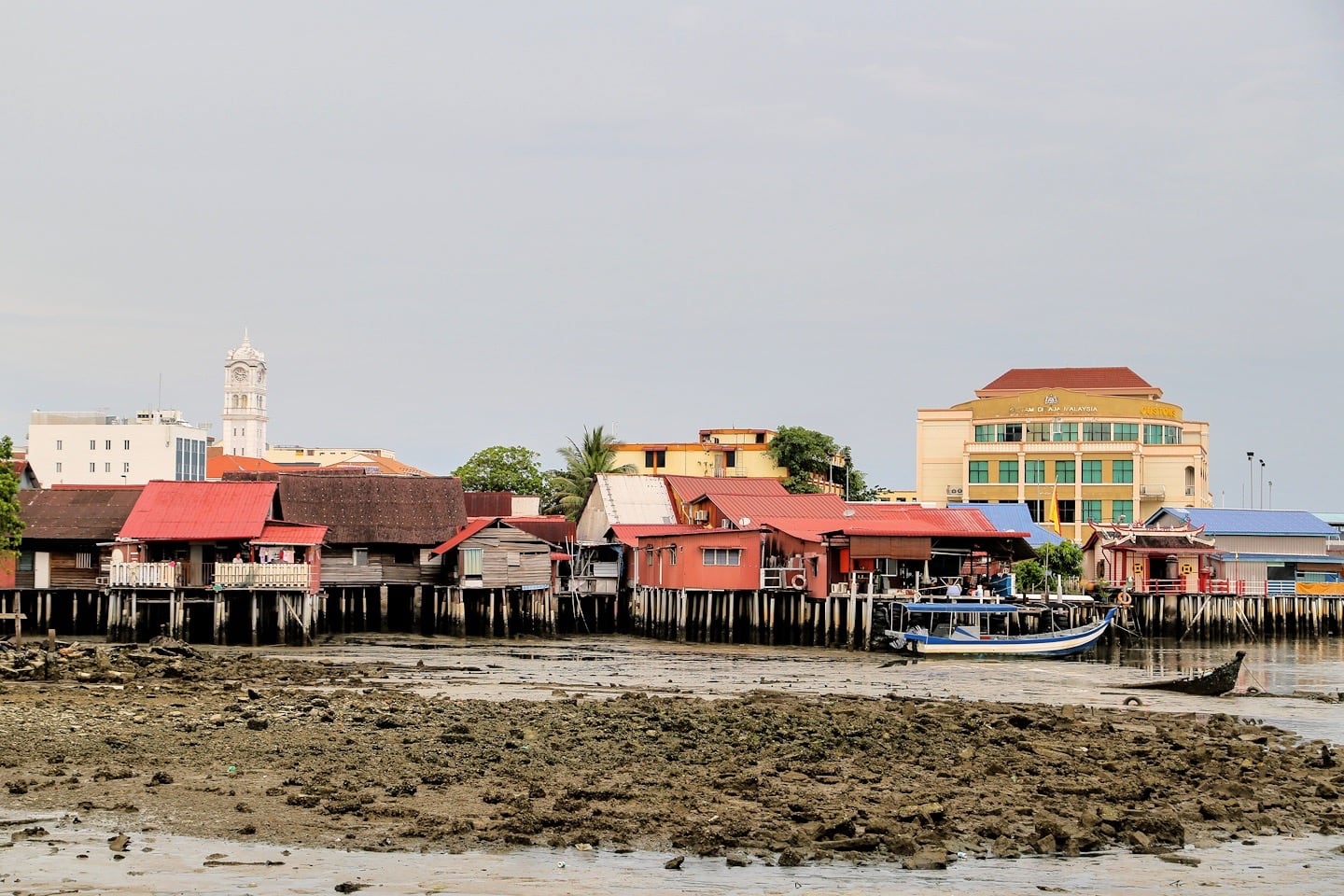
Chew Jetty
From Weld Quay (or the other jetties) the Clan Jetties look like a stilted mishmash of structures and materials.
We decided to visit the most well-known pier, Chew Jetty, first. Go big or go home, right?
Upon arrival, it still wasn’t clear if we’d feel welcome or resented. From some of what I’d read, I was expecting stink eyes, scowling, and angry hand gestures and shouting from elderly Chinese women.
Stepping into Chew Jetty, however, it was immediately apparent that our reservations were all for naught. The entire pier, it seems, had transformed itself into a kitschy wharf-style tourist attraction, with little shops selling everything from ice cream to locally-made clothing, souvenir trinkets to gourmet coffee.

Our hearts sank. We wanted to visit Chew Jetty to get a sense of the unique lifestyle, fascinating history, and rich cultural heritage of this over-water community. Instead, we got Penang’s version of Fishermen’s Wharf.
I get it, local residents see an opportunity to leverage the disruptive hordes to improve their lives, and for that, I can’t blame them. I just can’t help but feel we barely missed the boat on this one.
What might we have encountered on a stroll through here five years ago?


Chew Jetty still offers glimpses of the past here and there, but it’s clear that this community is in transition with an uncertain future.


Chew Jetty is ground zero for Chinese New Year celebrations, as well as the Dragon Boat festival every year.

Portable street altar for offerings at the end of the pier.

Other area Clan Jetties, as viewed from Chew Jetty.
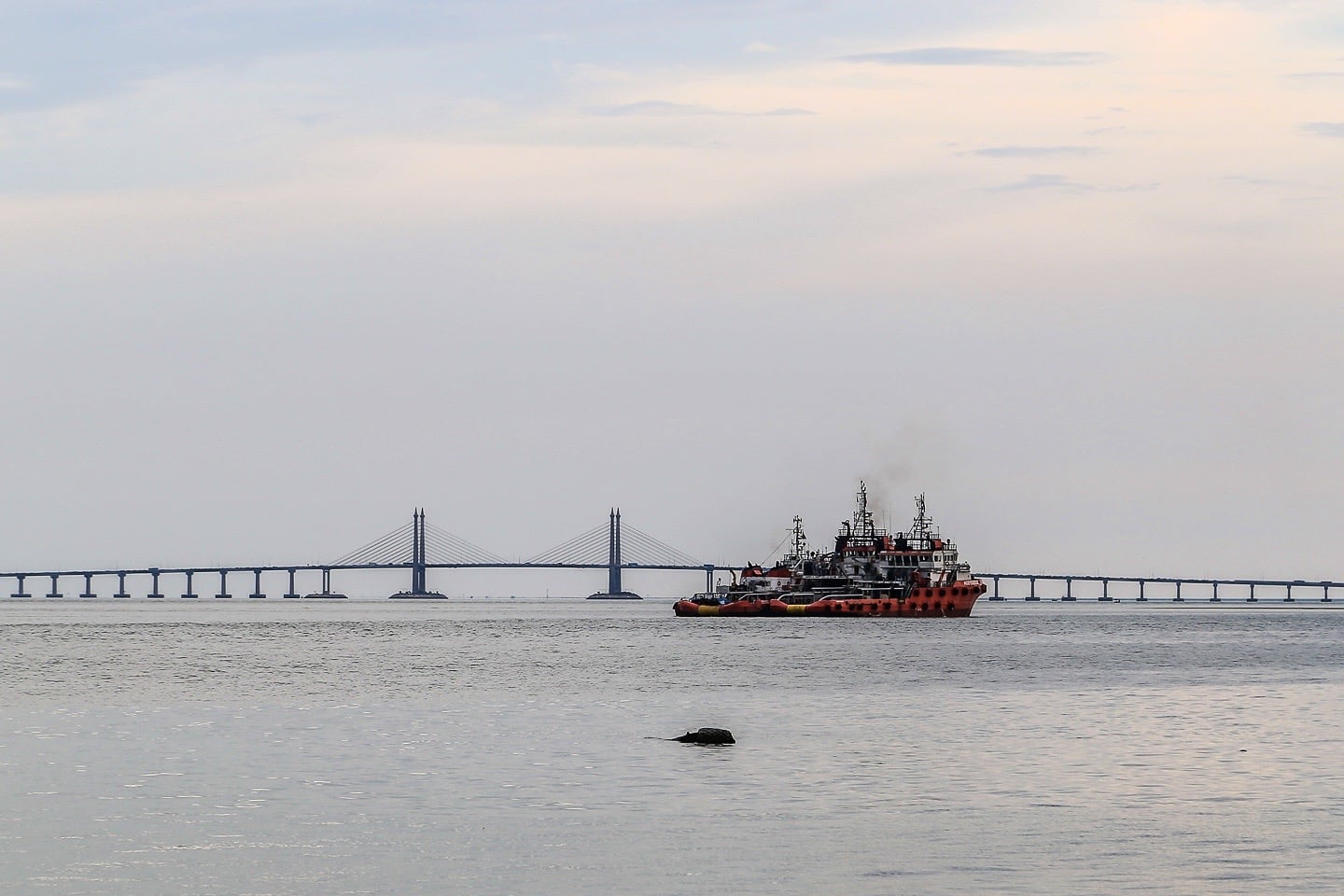
Penang Bridge, as viewed from the jetties.

For those visiting Chew Jetty, they do ask that visitors only come between the hours of 9am and 9pm. You can also hire boats from the jetty for a 10-minute sightseeing tour around the pier.
After leaving Chew Jetty, we decided to head north towards historic Church Street Pier. On the way, we encountered a sign for another Clan Jetty and thought we’d check it out.

Lim Jetty
A small temple marks the entrance to each of the Clan Jetties. This here is lesser known Lim Jetty (see map).

Immediately upon entering Lim Jetty, we knew we’d made the right decision. There were no shops and no other visitors. Daily life here seemed to continue unabated and unaffected by tourism.
We were further buoyed after seeing the welcome message at the entry to the pier. It read:
“Lim Jetty, a serene and unique community living above the sea. We are over 100 years old and one big family, living harmoniously till today.”
“Please enjoy our quiet way of living, free from commercialism.“

Seems the old ways aren’t completely lost among the Clan Jetties.
If you plan to visit the Clan Jetties of George Town, we recommend exploring the jetties on your own. Take a stroll down Chew Jetty, but with the right mindset. If souvenirs and ice cream are your aim, you won’t be let down.
If you’re looking to get a sense of the people and heritage of this special place, it’s probably better to visit one of the others such as Lim Jetty.
There is no cost to enter these communities, but a small contribution is appreciated for maintenance of the wooden planks from the increased amount of foot traffic from visitors (look for the official red box near the entrance to the jetty).

Looking back at Weld Quay from Church Street Pier.

Church Street Pier
Historic Church Street Pier is much quieter these days than a century ago, but it’s still very much worth a visit.
We weren’t sure what we’d find on the old pier, and in all honesty, there isn’t much. There are, however, two large restaurants at the end of the pier that offer excellent views of the channel. Of the two, we chose Muchachas.



A sea view, two glasses of excellent Malbec, and happy kiddos. Can’t ask for more than that these days.
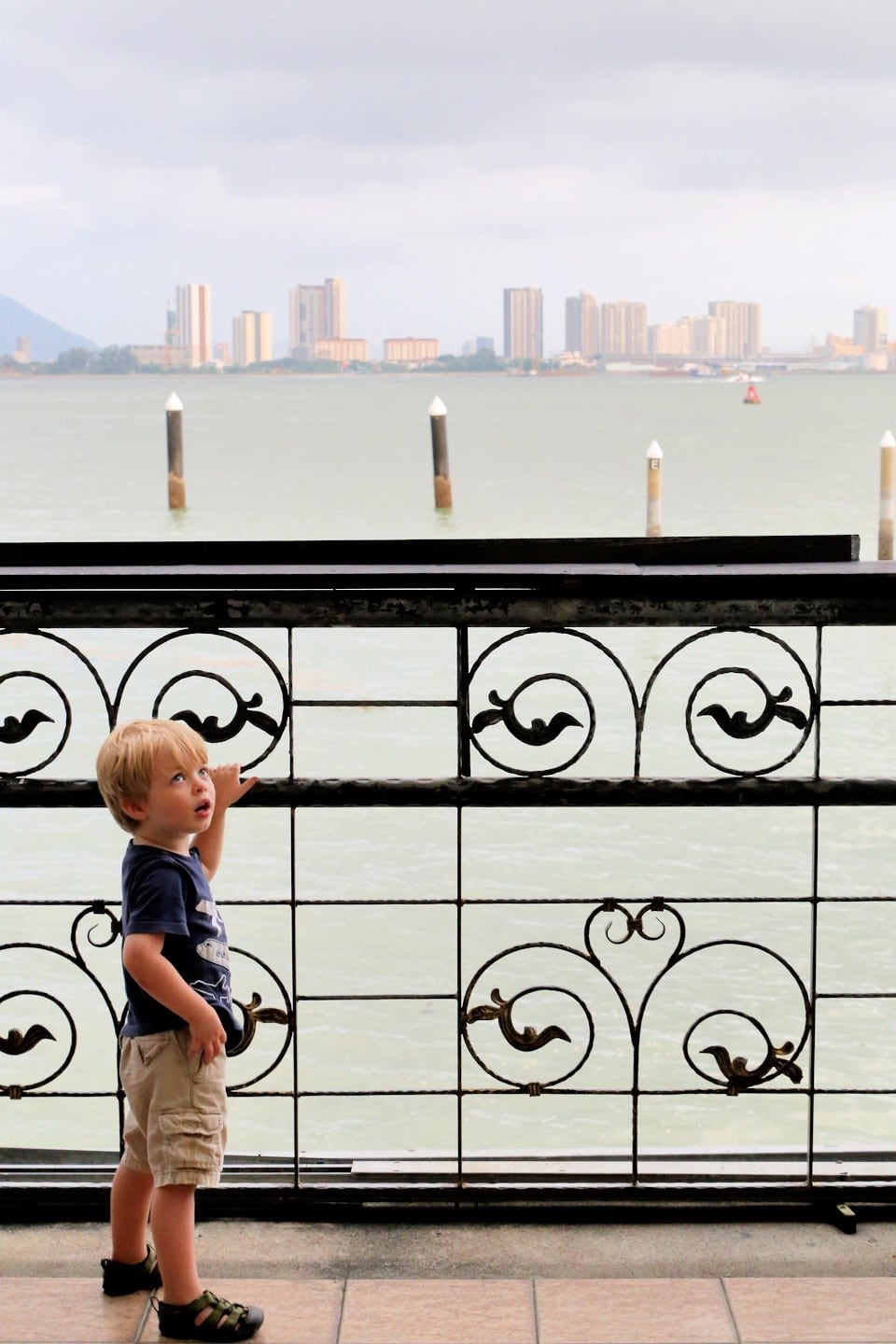
Noe enjoyed watching the RapidFerry boats coming and going. And Riley loved feeling the sea breeze in his face.


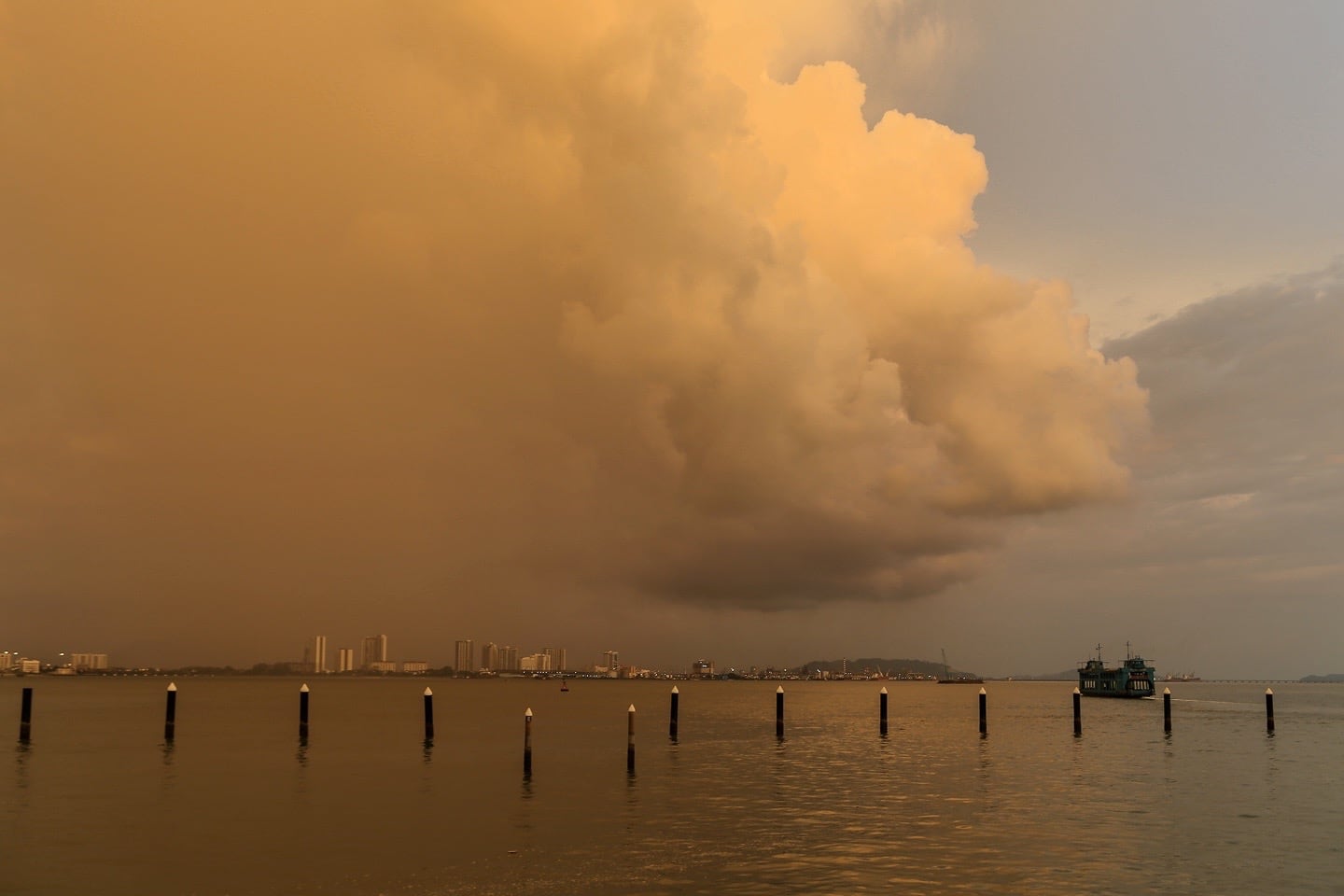
Looks like a storm’s rolling in. Time to move on to dinner.

Restoran Nasi Kandar Line Clear
I’ve been looking forward to hitting up one of Georgetown’s best Nasi Kandar joints, and Line Clear (see on map) was all I dreamed it would be (and more): No frills, delicious, and cheap.
Nasi kandar originated in Penang but has its roots with Indian Muslim traders who settled on the island.

At first, we didn’t know quite what to order here. The friendly staff made it quite easy: Chicken, beef, or seafood. We chose chicken and they loaded up two plates for us which we shared between the four us.

Generous portions and absolutely delicious. And not too spicy for the kiddos.
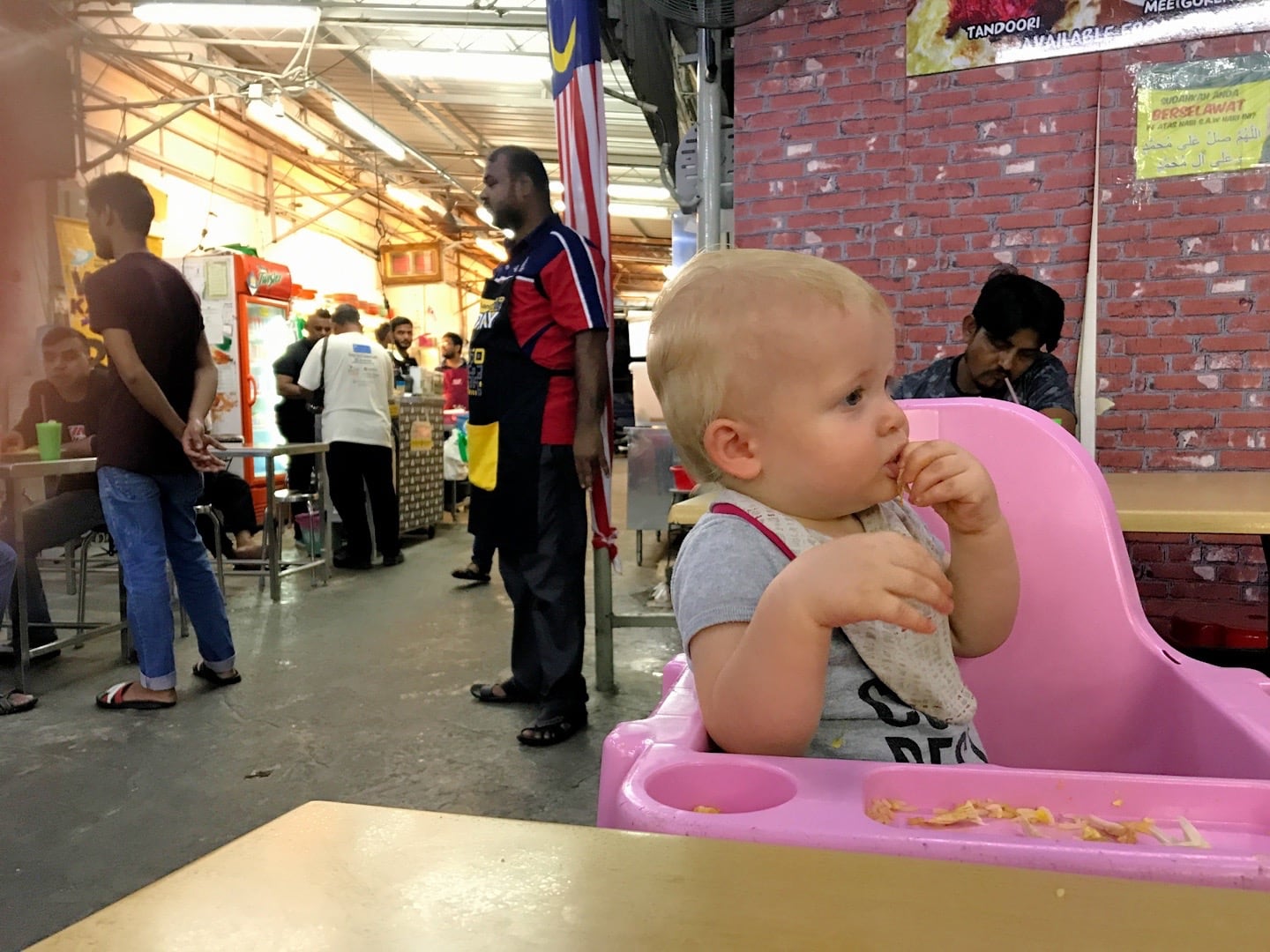
Riley devoured the chicken, and Noe devoured everything else.

Our Nasi Kandar meal set us back US$7, including water and two huge plates. Our only regret is that we didn’t get the teh tarik. We noticed a number of patrons drinking what looked like chai / masala tea and asked for the same, but the staff told us they didn’t have it. Later, we discovered it was teh tarik that we meant to order — a Malaysian standard similar to Indian chai.

Junk Cafe
On our way back from Line Clear, we happened upon this crazy and terrifying little bar.
Equal parts Voodoo, Rasta, and island antique museum, Junk Cafe was a great place to grab a quick drink while the kiddos sat in awe of two rooms jam packed with oddities from around the world.
Noe loved thumping on the big bongo drum, and best of all, the trance music was just loud enough to drown out both of the boys (but not loud enough to cause any permanent hearing loss…)

Noe had been such a good boy this afternoon that we treated him to a watermelon juice. Of all the fun things we did today, it may very well have been the highlight of his day.





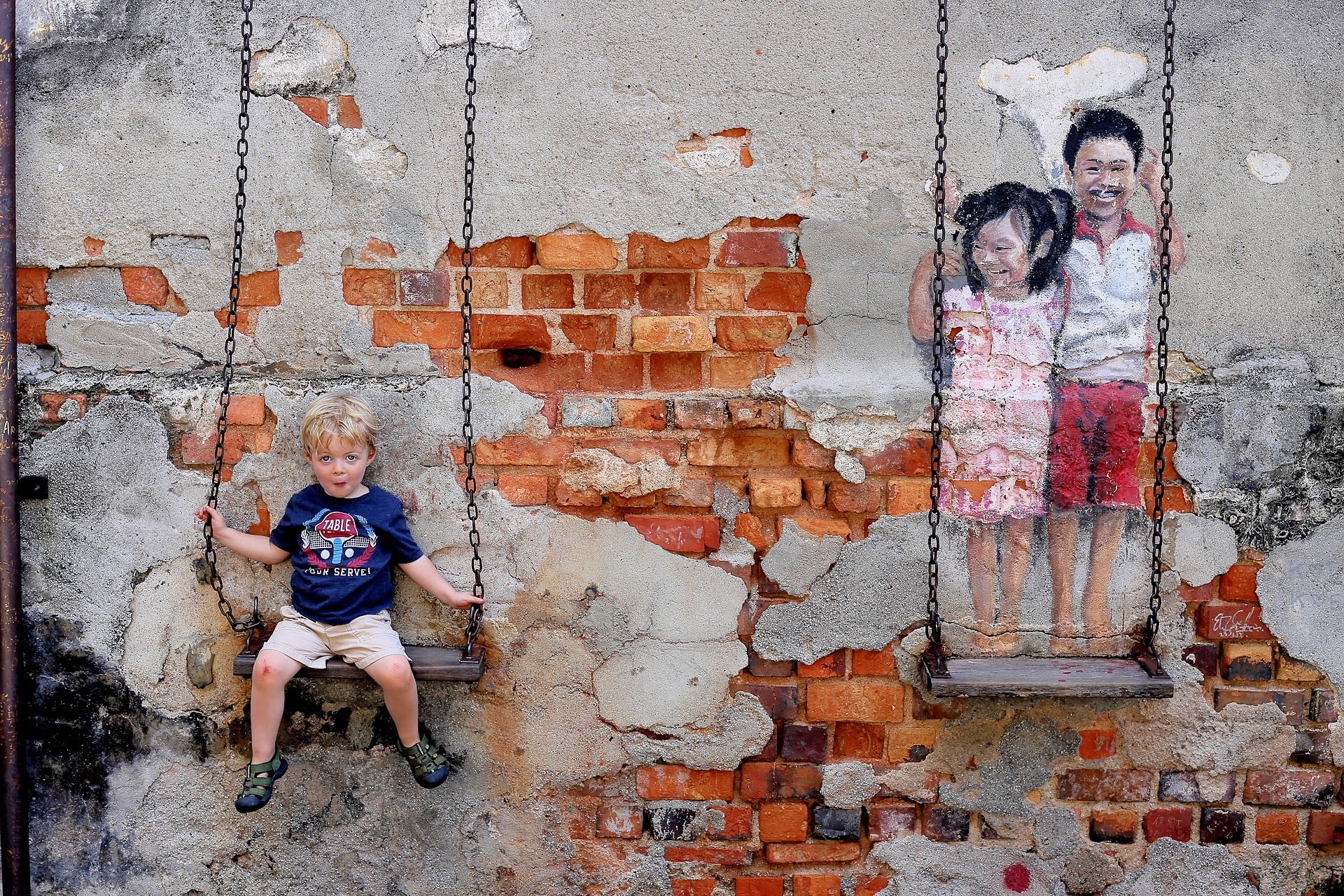
Such great experiences. The boys are being exposed to so much. Thanks for taking the time to organize and share your photos and descriptions.